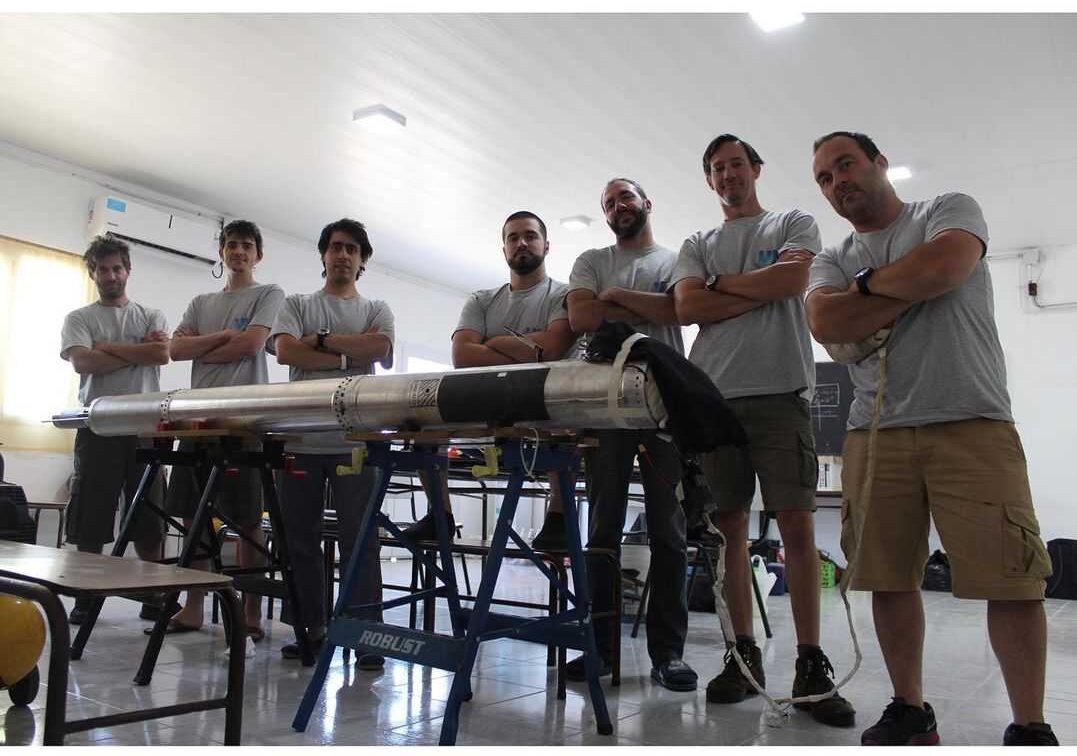A few days ago, in the town of Magdalena (province of Buenos Aires) a historical event took place. Argentine startup LIA Aerospace successfully launched its first rocket, the Zonda 1.0, powered by biodiesel fuel.
LIA Aerospace is a startup company looking to gain a foothold in the competitive (and growing) market for orbital cargo launch systems. Reliability, availability and profitability are the criteria that guide the design of what its creators claim will be the satellite launch vehicle of the future.
Our rocket launch, as seen by the talented filmmaker @fsichel ! ???????????? pic.twitter.com/KhH0Siw8YZ
— Lia Aerospace (@LiaAerospace) January 29, 2021
State-of-the-art technology combined with the right amount of creativity and smart choices creates the best possible design to meet the expectations of the growing launch vehicle market, as published on their website.
The successful launch of the Zonda 1.0, a 3.8 meter long vehicle that reached the programmed height of 3kms, served to test avionics, fuel, launch pad and other elements. Its cost was just US $ 60,000.

According to Infotechnology, the founders – Dan Eterberg (35) and Federico Brito (47) – hope to reach space in 2024 with a larger version of this same rocket, which will have a payload of 250 kg. Initially, the device will have to pass a four-stage program to «reduce the operational and financial risks of the project.» By the success of this launch, the company was able to confirm that all rocket systems are working properly.
Lowering costs and environmental impact from design

There are several highlights of the LIA Aerospace proposal, which were incorporated from the design itself.
The rockets are reusable, which reduces the environmental impact of the launches, while reducing costs and production times.
«The propellant propulsion system of the Zonda 1.0 included hydrogen peroxide as an oxidizing agent and used biofuels, generating 60% less carbon footprint than the fuels and propellants that are usually used», explained Lic. Brito, one of the founders of the company.
The main reason for choosing hydrogen peroxide over liquid oxygen is the enormous simplification of production, handling and storage.
For small and medium launch vehicles it is more convenient because it´s in liquid state at ambient temperature and pressure and as it is not corrosive, reducing the cost of hardware.
Another major advantage is the ability to convert hydrogen peroxide to a hypergolic propellant, simplifying the design, operation and ignition of the rocket engine.
The biofuel used was produced from the combination of different vegetable oils.
Strategic advantage
An important point that the company highlights is the privileged location of the coast of Argentina, since it is suitable for launches both to the east and to the south, which offers the possibility of many different orbit angles.
Another significant advantage is time. There is very little availability for the launch of small satellites (less than 500 kg), due to high costs and growing demand.
In recent years, a large number of companies and entities have emerged, which are developing mini and nano satellites, but there are very few options to take these cargoes into space. There are not enough launch vehicles.
It is estimated that the number of small satellites that will be launched in the next decade will triple the current one, thus, the business opportunity offered by entering the space logistics business is clear.
The road ahead
The project is divided into 2 main stages ahead. The pre-project, technology demonstration stage has already been completed with the successful launch of the Zonda 1.0.
Stage 1 follows, which aims to create the one-stage Zenit rocket, which should be ready by the end of 2022. It should allow placing loads of up to 30kg at sub-orbital heights, offering up to 4 minutes of micro- gravity, primarily for scientific research and development functions.
For stage 2, it is about the development of the PROCYON rocket, with two stages, which could already place loads of between 150 to 250kg in low orbit (where the vast majority of satellites currently circulate). It should make its first flight by the end of 2024.
The great thing about the new space race is that the game opened up for many new players. Innovation, ingenuity and passion can take you to the stars. The sky is no longer the limit.





